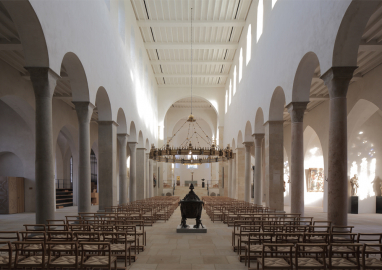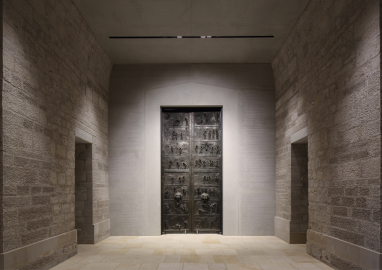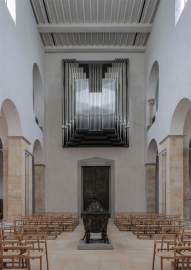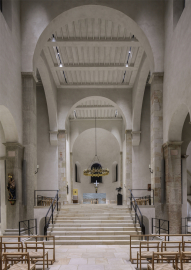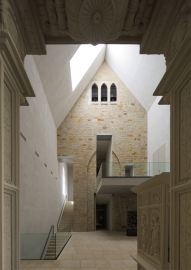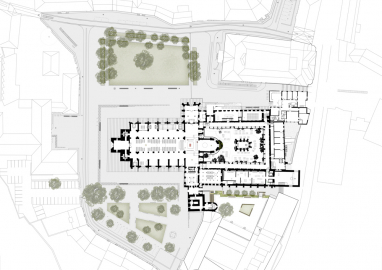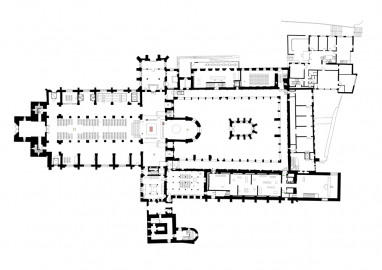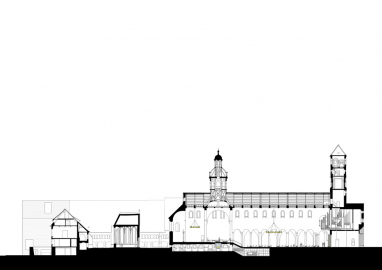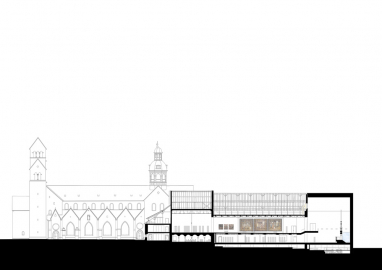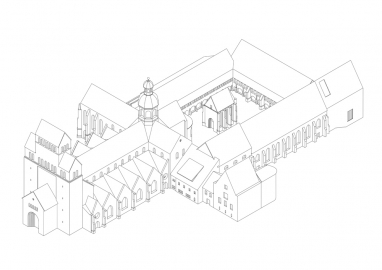Hildesheim Cathedral of Mary with museum and annex
To celebrate 1200th anniversary of the city of Hildesheim, the cathedral and its annex were renovated and remodeleled in its functional organization. Everything pivots around the constellation of the ensemble interacting with the new positioning and exhibition of the extraordinarily precious treasures and religious interior setting.
The distinguished changes within the various buildings as well as the courtyard, show the architectural new interpretation of the room continuum. The appropriate and timely liturgical reform of the cathedral, the axial new positioning of the church treasures Bronze door (1015), baptismal font (1322), Hezilol chandelier 1054, Azelinleuchter 1044, Christssäule 993-1022) and the establishment of a vault under the central nave as well as a new place for the cathedral treasure in the annex are the main achievements of the renovation.
The architectural concept builds on three important principles:
1. Understand and clean the room according to its specific characteristics and (own) system.
2. Organization of the liturgical elements according to the scriptures and their meaning
3. Showing the true face of the substance and simultaneously creating a new visable and clear, yet reserved and minimalistic design idiom. Hereby the perception of new and old are possible and important, and create a new material and formal coherence.
These principales are held upright through the belive of an integer and sophisticated, yet differentiated spacial unity. It displays the presence of past epochs in accordance with a contermpory architeural composition.
This became more and more important, as years of planing found its limits defined by the archelogical findings. At the same time there were many technical, constructive, functional, legal, financial, archeological, art-historian, acoustic and religious requirements.
The new conception relied on the removal of most post-war additions, thereby reconstructing the historic architecutral sense of the building. For example by removing the ‘new’ organ and altar stairs, closing off the narthex and northern transept as well as recovering the original proportions by lowering the ground level. At the same time additions for new requirements like the discovered vault and the exposer of preceding epochs, including some post-war reconstruction, and completely new parts, give the cathedral a new understanding and spirit.
To protect the one-of-a-kind treasures, as well as the organ, a combination of floor heating and thermoactive building parts were combined to a very cost efficient and gentle heating system, which ensures a constant room temperture of 13-17°C in winter and summer.
The two story clositer now functions as an entry to the courtyard with cementary and the thousand-year rose. In the upper level it turns into the lapidarium of the museum. The southern wing of the lapidarium was integrated into an old chruch and now is visable in two stories of the exhibition as well as the extension in which the rood screen is placed.

